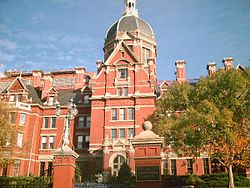This week’s blog is by a friend and colleague Dr. Ed Bender. Ed is a cardiothoracic surgeon who is affiliated with Stanford and practices in the Bay area. He is a pioneer in the development and use of Smartphone Apps for surgeons. Using Smartphone Apps in a Daily Medical Read More
Category: Chest Surgeons
The surgeon’s dilemma. An unescapable result of any invasive operation, certainly the chest surgery I performed for several decades, is pain. Patients hurt…a lot. My patients needed, actually required, narcotics/opioids (opioids are narcotics) for their pain. If the pain was insufficiently treated they not only suffered but were unable Read More
Air in the chest. The lungs completely fill the thoracic cavity (the inside of the chest) as we breath in and out. During the normal respiratory cycle the chest enlarges as chest wall muscles draw it out and the diaphragm descends. This creates negative pressure which expands the compliant lungs. Read More
Pus in the chest. Any fluid accumulation in the chest but outside the lung, between the two pleural surfaces, constitutes a pleural effusion. My previous blog addressed malignant ones. An infected effusion is called empyema. The most frequent cause is pneumonia. Uninfected effusions frequently accompany pneumonia but occasionally they are Read More
Cancer and fluid in the chest. When a surgeon looks into a chest the initial view reveals only a lung. It seems to take all the room. That’s because it’s full of air. However, while it touches the inside of the chest wall it’s not attached. The lung is quite Read More
Fad or the future? In my last blog I touted the benefits of minimally invasive chest surgery, thoracoscopy, which provides as good outcomes as open surgery but causes much less pain and allows patients to recover quicker. So-called robotic surgery is felt by some surgeons to be the next advance Read More
What is the goal of an esophagectomy? The answer may seem obvious, but it was not always so. As recently as when I began my practice in the early 1980s the hoped-for outcome was that the patient’s dysphagia would be relieved. Cure of the cancer was a welcome result but Read More
Into the chest. The chest is the home of most of the esophagus, so it is the location of most cancers. Operating in the chest was impossible until sufficient anesthesia capabilities were established and the lungs could be ventilated. No awake and sentient patient could tolerate the pain of a Read More
A challenge for surgeons. The esophagus starts in the neck, traverses the chest, and ends in the abdomen where it enters the stomach. Surgeons may need to enter up to all three anatomic areas to perform an adequate cancer operation. In addition, the esophagus is in close proximity to the Read More
What two surgeons did not do dramatically changed the course of American Surgery. I have discussed the contributions of two influential pioneer surgeons Macewen and Graham. They also changed the course of Surgery in the USA by something they did not do. Both men were offered the position of Chairman Read More

